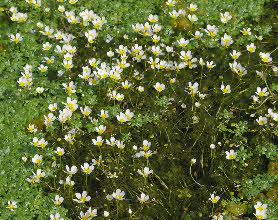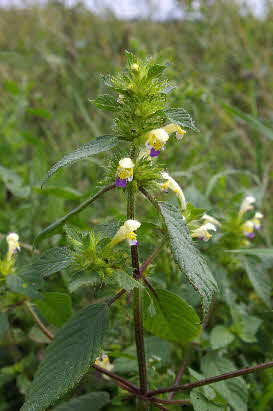Why compile a Fenland Flora?
Fenland is now one of the most intensively farmed areas of Europe and has a reputation for monotony in landscape and wildlife. However Fenland was reclaimed over centuries from tidal marshes and floodplain fens and the remnants of these former wetlands are present not only in famous sites like Wicken and Woodwalton Fens but scattered through the region in/by drainage channels, older road verges and floodbanks.
Further diversity is provided by the old Fenland islands and land reclaimed in the medieval period, where old grasslands and flooded mineral workings support a remarkable flora. The Fenland economy depends on drainage and flood defence, but this activity has also created extraordinary wildlife sites in the washes of the great rivers, renowned for their birds, but equally valuable for their vegetation.
The importance of Fenland in wild plant conservation was confirmed by the Fens Biodiversity Audit and the surveys of Richard Lansdown that have shown our drains to be amongst the most important refugia for aquatic plants in lowland Britain.

Fenland straddles 7 vice-counties (Cambridgeshire, Huntingdonshire, Lincolnshire (north and south), west Norfolk, Northamptonshire and west Suffolk), but in all these counties, the small number of locally-based botanists and the perceived lack of interest has led to under–recording over many decades, indeed centuries. BSBI vice-county recorders are keen to remedy this situation with more effort in Fenland.
We believe that the right way to stimulate this recording is to study the Fenland as an entity. Not only should this ensure proper coverage but such an approach has the added value of answering questions about the reasons for plant distribution in Fenland – soil type, date of reclamation, drainage history, agriculture, mineral abstraction and urban growth. Why should a local Flora always focus on a county – why not let the landscape, the ecology, topography and hydrology dictate?
The scope of the Fenland Flora project
We are conducting a major survey (due to finish in 2018-19 for publication in 2020-2021) to map the distribution of the entire vascular flora and stoneworts of the Fenland and to characterise the plant assemblages that occur in this mainly artificial landscape (project prospectus). Although the Fenland is a natural unit, its boundaries are not marked on the map – our definition of the Fenland and the area we are surveying is described in detail. Click to download the document Defining the Fenland (revised 2018).
Our recording unit for the survey is the 4km2 tetrad, and we combine new field surveys of all important habitats and a compilation of records from published and database sources for the period since 2000. In the published Flora, we intend to produce maps that summarise the known distribution of species in four periods: a) Pre-1950; b) 1951-1970; c) 1971-2000; and d) post 2000.
The project collaborates with the BSBI recorders in all vice-counties and with the national Biological Records Centre, as well as local schemes in habitat restoration and recording: Great Fen, the Wicken Fen Vision, the South Lincolnshire Fenlands, RSPB (Frampton Marsh, Freiston shore, Lakenheath Fen, Nene Washes, Ouse Washes & Ouse Fen), the Wissey Wetlands and at Kingfishers Bridge. More information on initiatives in the Fenland can be found with the Fens for the Future partnership.
How can botanists help?
Since formal recording began, we have made great progress in surveying the Fenland, and hope to conclude the survey in 2018-19. Nonetheless, there remain significant poorly recorded areas (see coverage map in the latest progress report) and some Fenland specialities have not been seen for a long time – their current status needs assessment. If you would like guidance as to where to focus your efforts, contact us and we’ll discuss which areas and which species need real attention. As we move toward completion of the project, the activities are:
- Recording of tetrads with fewer than 125 species recorded.
- Recording tetrads that overlap the Fenland/upland boundary, so that we can clarify which species are in the Fenland and which are not.
- Recording of particular sites that may support an important flora.
- Help with access to tetrads with few or no public rights of way.
- Identifying historical data-sets (pre-2000) that enable the Fenland Flora to reconstruct change.
- Specialist input on critical groups e.g. Callitriche, pondweeds, water-crowfoots, Salix and Populus species, as well as Rosa, Rubus and Taraxacum. Hieracium is fairly insignificant in Fenland.
The Fenland Flora
Contacts – the project coordinators:
- Jonathan Graham - jonathan.graham@ntlworld.com
- Owen Mountford - om@ceh.ac.uk and fenburdock@icloud.com
Or contact the project c/o Owen at: 193 Great North Road, Eaton Socon, St Neots PE19 8EE.
Video
Watch the video of Owen Mountford's talk 'Botanical Highlights of the Fens' given at the 2022 BSBI Spring Conference.

Articles and other relevant resources
- BSBI News (2013) – introducing the project
- Aquatic and Wetland Plant Forum